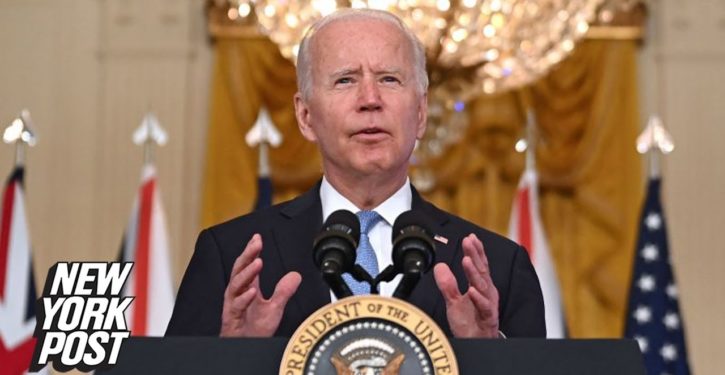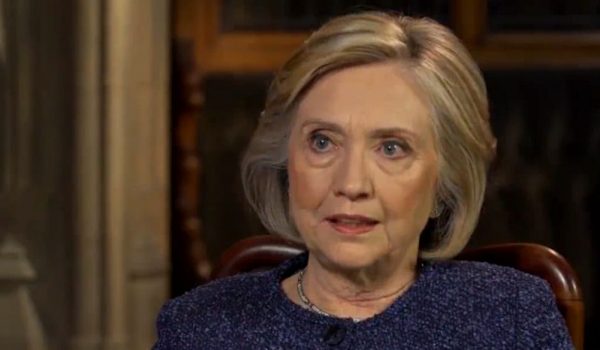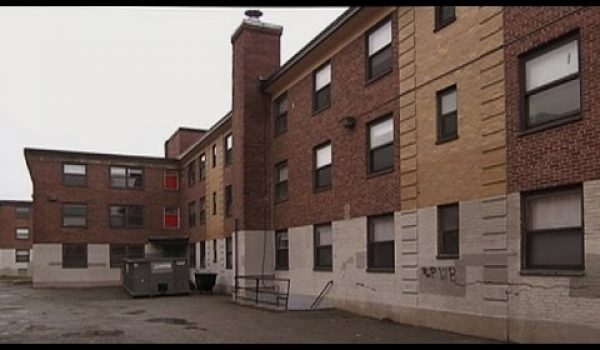
This fall, the Biden Administration is likely to change the definition of poverty to increase spending on food stamps and Medicaid by more than $124 billion over the next decade. The new definition will reward states that have bad policies that increase housing costs, and do a worse job of identifying truly needy people.
And that’s just the beginning. The change would also increase spending by billions of dollars on Obamacare, Medicare Part D, and other programs, report two think-tanks.
The Foundation for Research on Economic Opportunity explains that the administration is considering a
stealth increase in poverty spending: Eligibility for most major welfare programs in the U.S. is tied to the federal poverty standard. That’s why the Biden Administration’s potential change to the Census Bureau’s supplemental poverty measure (SPM) from the current official poverty measure (OPM) is so important. FREOPP Senior Fellow Michael Tanner writes that, while the OPM is flawed, the SPM does a worse job of identifying the Americans most in need. What’s more, Michael cites our friends at the American Enterprise Institute, who estimate that a switch from OPM to SPM could effectively raise the poverty line by 20 percent in 2024 alone. This change would prompt commensurate multi-billion dollar increases in spending on Medicaid and other programs, as well as a shift in federal funding from low-cost states like West Virginia to high-cost states like California—effectively rewarding state policies that drive up housing and other expenses. With consequences this significant, any change to poverty measures must be made in the context of a full and open debate, not a stealth change in funding formulas.
As the American Enterprise Institute explains,
A new report from the National Academy of Sciences seeks to redefine poverty. The NAS presents the effort as a matter of science: “An accurate measure of poverty is necessary to fully understand how the economy is performing across all segments of the population and to assess the effects of government policies on communities and families.”
But the report’s real purpose could be to expand the welfare state. If the Census Bureau adopts the new poverty definition, millions more Americans could automatically be made eligible for benefits—leading to at least $124 billion in additional government spending over the next decade, all accomplished by administrative fiat.
There is no scientific basis for any particular poverty line. Advocates of redistribution push for a higher poverty line because they want more people to count as poor and qualify for government assistance. But scientists aren’t supposed to be advocates. The 13 authors of the recent NAS paper appear to have been selected along partisan lines: 12 of them have contributed to Democratic causes or worked for Democratic administrations.
The NAS authors recommend that the Census Bureau adopt its Supplemental Poverty Measure as the nation’s headline poverty statistic. This measure relies on an extremely complex formula, but the end result is clear: The new poverty line would be significantly higher. It would also break with more than 50 years of precedent by establishing a relative standard. People could become better off and still be classified as “poor”; poverty would decline only if income at the bottom of the distribution increases more quickly than in the middle class.
Over the years, Congress has tied eligibility for dozens of programs to multiples of the poverty line. To qualify for the Supplemental Nutrition Assistance Program, a family’s income can’t exceed 130% of the official poverty line. For ObamaCare subsidies, the limit is 400%. The Biden administration could raise the poverty line, and thereby expand these benefits as soon as September, when the Census Bureau releases its annual report on poverty. The new poverty line would affect programs starting in 2024, all without any input from Congress.
In a new paper, I estimate the effects of such a change. I project that the poverty line for a family of four would rise to almost $38,000 in 2024, over $6,000 higher than it would be using the current approach that updates the poverty line with inflation each year. The gap would grow over time, and by 2033 the poverty line would be more than $13,000 higher than it would be using the current approach.
Raising the poverty line would increase government spending on entitlements by more than $124 billion over the next decade—$47 billion for SNAP and $78 billion for Medicaid. ObamaCare subsidies, Medicare Part D low-income subsidies and the school-lunch program would grow as well, not to mention the effects on dozens of nonentitlement programs.
As consequential is the potential reallocation of government assistance across states. The poverty line under the Supplemental Poverty Measure is higher in states like California and New York, where housing is more expensive, and lower in states like West Virginia and Mississippi, where housing is cheaper. If state-specific poverty lines were used to determine program eligibility, residents of states with cheaper housing would receive a smaller share of assistance. Yet poor people in low-cost states tend to be more deprived than poor people in high-cost states.
Redrawing the official poverty line would be a nakedly political move without any scientific basis that could alter the scope of the safety net overnight. It is up to Congress to prevent the administration from unilaterally expanding program eligibility and increasing government spending by over $124 billion.
As FREOPP’s Michael Tanner explains, compared to the current poverty measure, the proposed Supplemental Poverty Measure (SPM)
does a worse job of identifying those most in need. A study by Bruce Meyer and James Sullivan used consumer expenditure data to compare families that were poor under an OPM-type measure with those considered poor under a more SPM-like measure. They found that SPM-only poor families were actually better off than OPM-only poor families on all general measures of hardship. Other studies have reached similar conclusions….
tying benefits to the SPM would effectively reward states with policies that drive-up costs. For instance, California’s welfare recipients would receive higher benefits because the state’s housing policies inflate rents.



